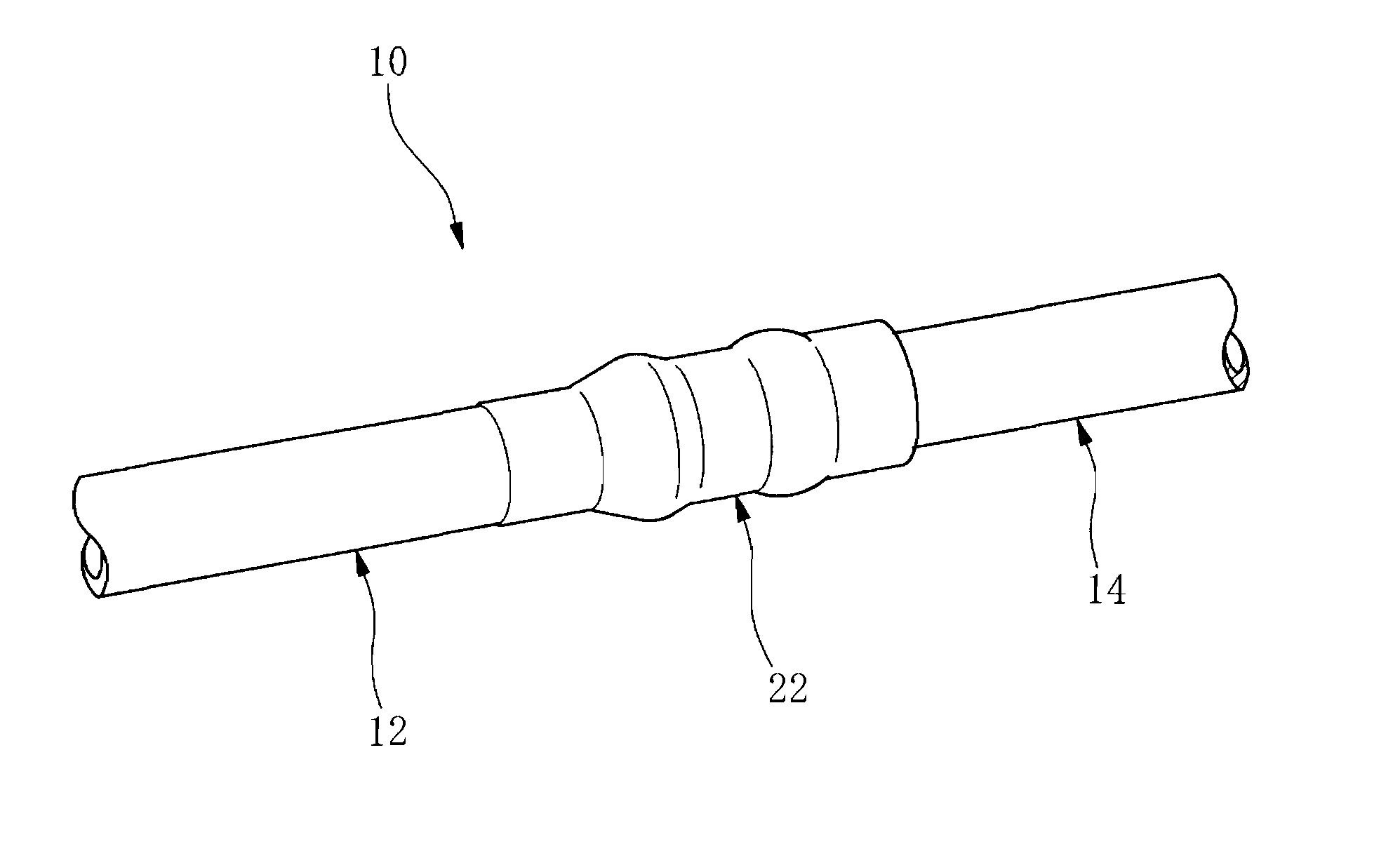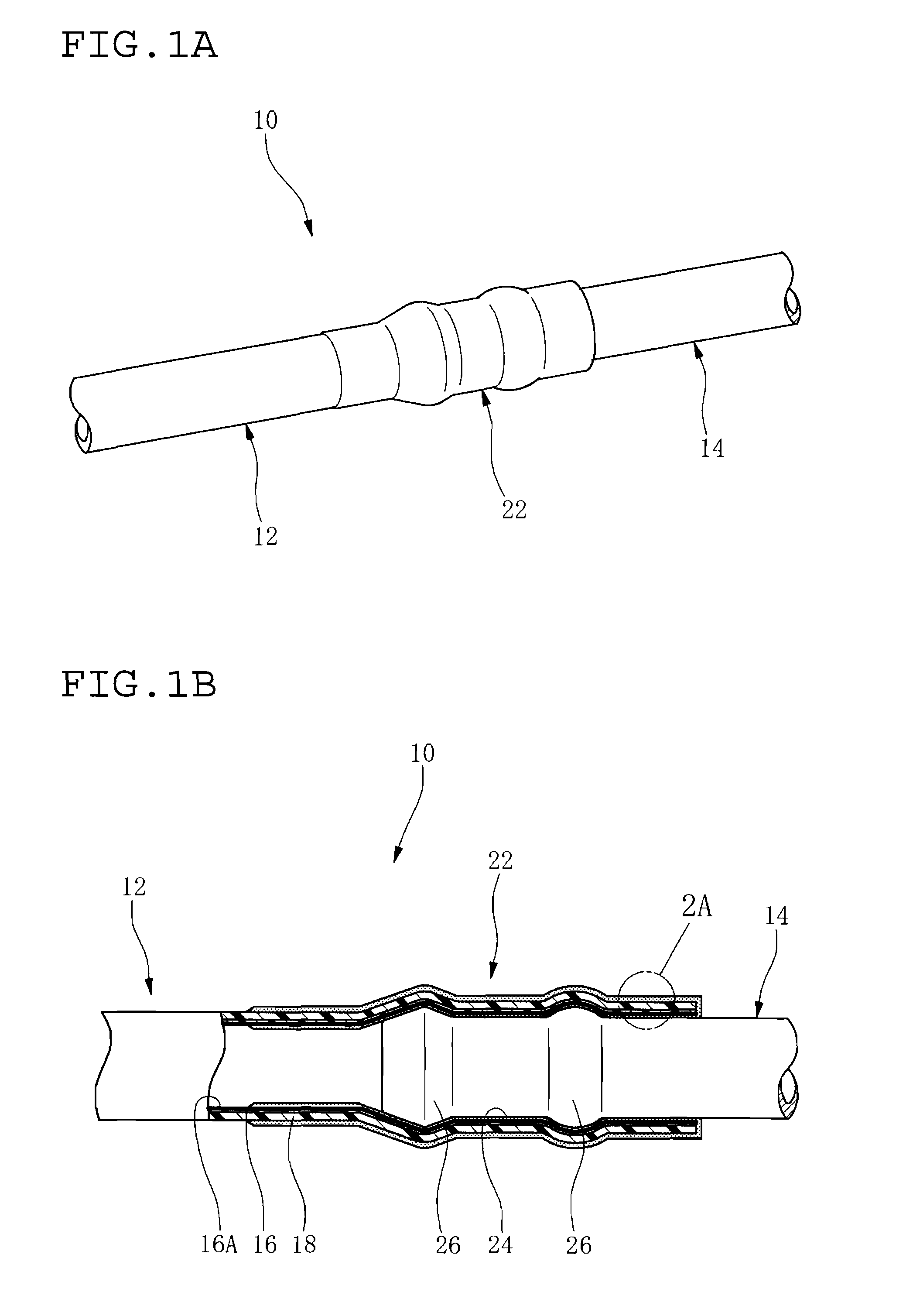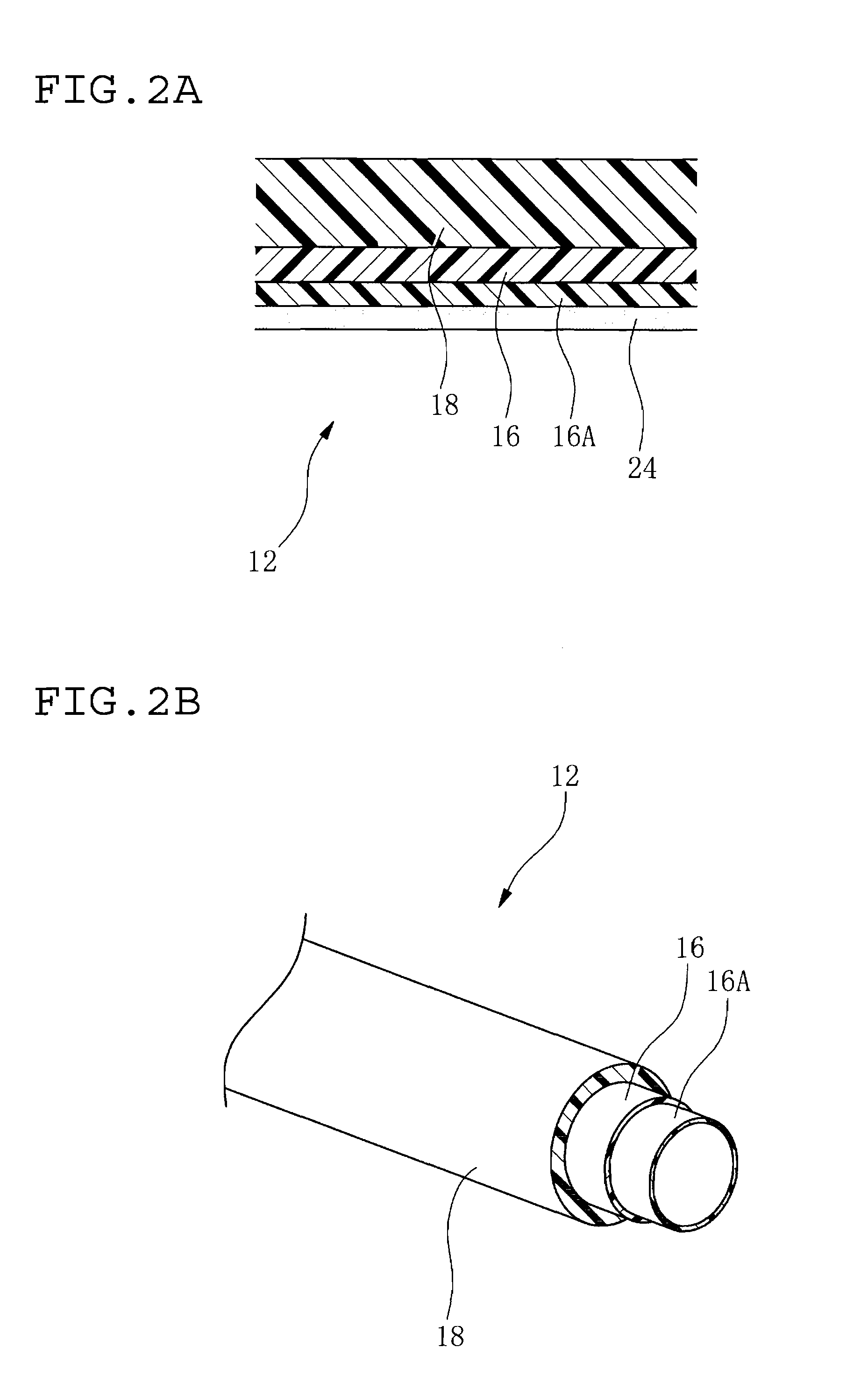Method for Producing Hose with Sealing Layer
- Summary
- Abstract
- Description
- Claims
- Application Information
AI Technical Summary
Benefits of technology
Problems solved by technology
Method used
Image
Examples
Embodiment Construction
[0096]In FIG. 1A, reference numeral 10 indicates so-called direct-connect hose assembly by assembling a hose 12 and a metal pipe 14 in unitary and directly fitting relation to each other. The hose 12 is used, for example, as an automotive fuel conveying hose. FIG. 1 B shows a structure of a connecting region between the hose 12 and the metal pipe 14, with a sectional view of the hose 12.
[0097]As shown in FIGS. 1B, 2A and 2B, the hose 12 has a multilayer structure including an innermost layer 16 made of ETFE, and a resin layer 18 made of PA12 on an outer side of the innermost layer 16.
[0098]Here, an inner periphery portion of the innermost layer 16 of ETFE is a conductive layer 16A. That is, the conductive layer 16A defines an inner surface layer of the innermost layer 16, and the whole of the innermost layer 16 including the conductive layer 16A is made of the same resin material (here, ETFE).
[0099]Meantime, as shown in FIG. 2C, the multilayer structure of the hose 12 may not includ...
PUM
| Property | Measurement | Unit |
|---|---|---|
| Pressure | aaaaa | aaaaa |
| Diameter | aaaaa | aaaaa |
| Melting point | aaaaa | aaaaa |
Abstract
Description
Claims
Application Information
 Login to View More
Login to View More - R&D Engineer
- R&D Manager
- IP Professional
- Industry Leading Data Capabilities
- Powerful AI technology
- Patent DNA Extraction
Browse by: Latest US Patents, China's latest patents, Technical Efficacy Thesaurus, Application Domain, Technology Topic, Popular Technical Reports.
© 2024 PatSnap. All rights reserved.Legal|Privacy policy|Modern Slavery Act Transparency Statement|Sitemap|About US| Contact US: help@patsnap.com










